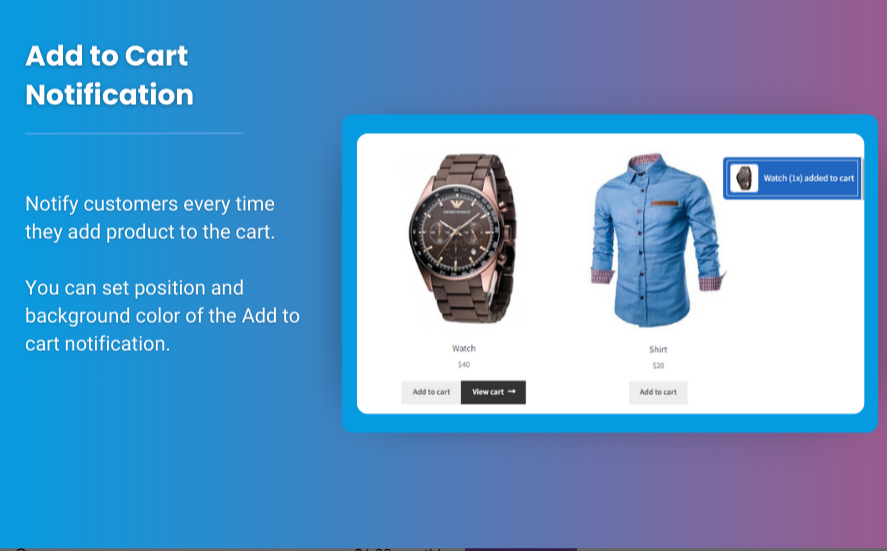Enabling customers to woocommerce upload products csv directly on the checkout page can be a game-changer for WooCommerce stores that offer personalized or custom products. Whether you sell custom clothing, personalized gifts, digital products, or require documents for services, providing a smooth and easy file upload option during checkout can enhance the customer experience.
In this article, we’ll walk through how to add file upload options to your WooCommerce checkout pages, explore useful plugins, and provide solutions for integrating woocommerce upload file into your store. Additionally, we will cover common questions and troubleshooting tips to ensure smooth file uploads and minimize customer issues.
Table of Contents
- Why Add File Upload Options to WooCommerce Checkout Pages?
- How to Add File Upload Fields to WooCommerce Checkout
- 2.1. Using the WooCommerce Checkout Manager
- 2.2. Using WPForms for WooCommerce Checkout
- 2.3. Using WooCommerce Upload Files
- Best Plugins for WooCommerce File Uploads
- 3.1. WooCommerce File Upload
- 3.2. YITH WooCommerce Uploads
- 3.3. WooCommerce Product Add-Ons
- Best Practices for Handling File Uploads on WooCommerce Checkout Pages
- Frequently Asked Questions (FAQs)
- Conclusion
1. Why Add File Upload Options to WooCommerce Checkout Pages?
Adding a file upload option to your WooCommerce checkout page provides numerous benefits, including:
- Personalization: Customers can upload custom artwork, logos, or text for personalized products like T-shirts, mugs, or wedding invitations.
- Streamlined Order Processing: Customers can upload documents, such as IDs or design files, directly at checkout, reducing the need for additional emails or communication.
- Increased Customer Satisfaction: By simplifying the process of uploading files during checkout, you enhance the user experience and increase the likelihood of conversions.
- Simplified Logistics: For businesses that need to collect documents, images, or other files from customers, providing a dedicated upload field at checkout is more efficient than collecting files after purchase.
With the right plugins, you can enable customers to upload files in a way that seamlessly integrates into the checkout process, making it easy for both store owners and customers.
2. How to Add File Upload Fields to WooCommerce Checkout
2.1. Using the WooCommerce Checkout Manager
WooCommerce Checkout Manager is a flexible plugin that allows you to customize the fields on your checkout page, including adding a file upload option. You can create custom fields where customers can upload files, images, or documents during the checkout process.
Steps to Add File Upload Fields:
- Install and activate the WooCommerce Checkout Manager plugin.
- Navigate to WooCommerce > Checkout Fields from your WordPress dashboard.
- Click Add Field to create a new custom field.
- Choose File Upload as the field type.
- Customize the field by setting options like the label, file types allowed (PDF, JPG, PNG, etc.), and maximum file size.
- Save your changes, and the file upload option will appear during checkout.
How it helps: The plugin provides an easy-to-use interface for adding file upload fields without the need for custom coding. You can specify the type of files your customers are allowed to upload, helping to maintain consistency in the type of files submitted.
2.2. Using WPForms for WooCommerce Checkout
WPForms is primarily a form builder plugin, but it can also be integrated with WooCommerce to create customized checkout forms with file upload functionality. It’s an excellent option for businesses that want to gather more information at checkout, like custom requests or files for personalization.
Steps to Add File Upload Fields with WPForms:
- Install and activate the WPForms plugin along with the WooCommerce Add-on.
- Create a new form in WPForms and add a File Upload field to the form.
- Add the form to your WooCommerce checkout page via shortcodes or widgets.
- Configure the file upload options such as file type restrictions and size limits.
- Set up notifications to alert you when a file has been uploaded.
How it helps: WPForms integrates easily with WooCommerce, offering an intuitive drag-and-drop interface to build custom file upload forms for your checkout process.
2.3. Using WooCommerce Upload Files
WooCommerce Upload Files is a specialized plugin designed to add file upload capabilities to WooCommerce product pages and checkout pages. This plugin supports multiple file types and integrates well with the WooCommerce checkout process.
Steps to Add File Upload Fields Using WooCommerce Upload Files:
- Install and activate the WooCommerce Upload Files plugin.
- Navigate to WooCommerce > Settings and find the Upload Files section.
- Enable file upload options on the checkout page.
- Choose the file types allowed and set size limits.
- Customize the field labels and instructions to guide customers through the upload process.
How it helps: The plugin provides a dedicated file upload section at checkout, making it easy for customers to upload files as part of the ordering process. You can control file sizes, types, and quantities, ensuring only relevant files are submitted.
3. Best Plugins for WooCommerce File Uploads
Several plugins are available that can make the process of adding file uploads to your WooCommerce checkout pages easier and more robust. Below are some of the best plugins for handling WooCommerce file uploads:
3.1. WooCommerce File Upload
The WooCommerce File Upload plugin allows store owners to add customizable file upload fields to product pages, checkout pages, and account pages. It’s a powerful tool for businesses that need customers to upload files as part of the purchase process.
Key Features:
- Add multiple file upload fields to product pages and checkout.
- Limit file types (e.g., images, documents) and file sizes.
- Option to add multiple file upload fields for different purposes.
- Easy-to-use interface for configuring file upload options.
Why it’s good: It integrates seamlessly with WooCommerce and gives you full control over file types and sizes, allowing you to prevent large or incompatible files from being uploaded.
3.2. YITH WooCommerce Uploads
The YITH WooCommerce Uploads plugin provides a flexible way to add file upload options to product pages and the checkout page. It’s ideal for stores offering personalized products or services that require customer-provided files.
Key Features:
- Add file upload options to product pages and checkout.
- Allow customers to upload multiple files per order.
- Set size and file type restrictions.
- Enable preview of uploaded files.
Why it’s good: YITH WooCommerce Uploads provides an intuitive interface and is compatible with product variations, allowing customers to upload different files depending on the options they select.
3.3. WooCommerce Product Add-Ons
WooCommerce’s Product Add-Ons plugin lets you add extra fields, including file uploads, to product pages and checkout. It’s great for personalized or customizable products where customers need to upload files or provide additional information.
Key Features:
- Add text, radio buttons, checkboxes, and file upload fields.
- Set optional or required fields for file uploads.
- Display uploaded files on the order confirmation page and in the admin panel.
- Customize labels and instructions for customers.
Why it’s good: The plugin allows file uploads to be incorporated directly into the product customization options, giving customers the chance to upload files as they configure their products.
4. Best Practices for Handling File Uploads on WooCommerce Checkout Pages
- Set File Type Restrictions: Always restrict file types (e.g., JPG, PDF) to ensure customers only upload relevant and compatible files.
- Limit File Sizes: Set file size limits to prevent performance issues and storage overload.
- Offer Instructions: Provide clear instructions for customers on how to upload their files and what file types or sizes are acceptable.
- Test the Upload Process: Regularly test the file upload process to ensure it works smoothly across different devices and browsers.
- Ensure Security: Use security measures to prevent malicious files from being uploaded, such as using file scanning plugins and limiting file types to safe formats.
5. Frequently Asked Questions (FAQs)
Q1: Can I allow customers to upload multiple files during checkout?
Yes, plugins like WooCommerce File Upload and YITH WooCommerce Uploads allow customers to upload multiple files at once. You can configure the fields to accept multiple uploads.
Q2: How do I ensure uploaded files are secure?
Always limit the types of files that can be uploaded (e.g., images, PDFs) and implement file scanning plugins to detect malicious files. Additionally, make sure that the upload process is encrypted.
Q3: Will file uploads slow down my website?
File uploads can potentially slow down your site if they are too large. Be sure to set appropriate file size limits and consider using a CDN (Content Delivery Network) to handle file storage efficiently.
Q4: Can I preview the uploaded files before processing the order?
Yes, plugins like WooCommerce Upload Files allow you to preview files before processing the order, ensuring that customers have uploaded the correct files.
6. Conclusion
Adding file upload options to WooCommerce checkout pages can greatly enhance your store’s ability to offer custom and personalized products, making the shopping experience more convenient for your customers. By using the right plugins, such as **WooCommerce File









